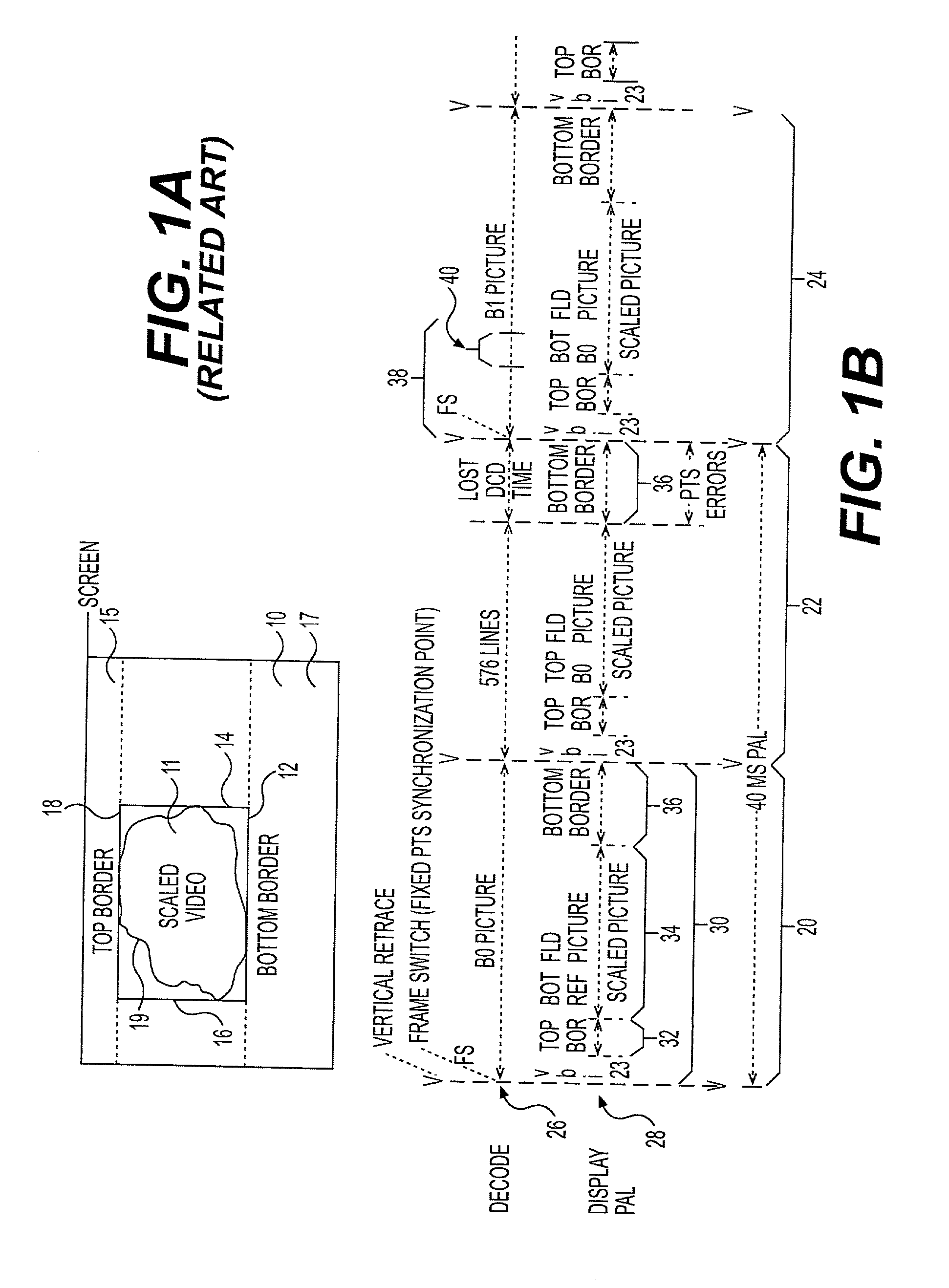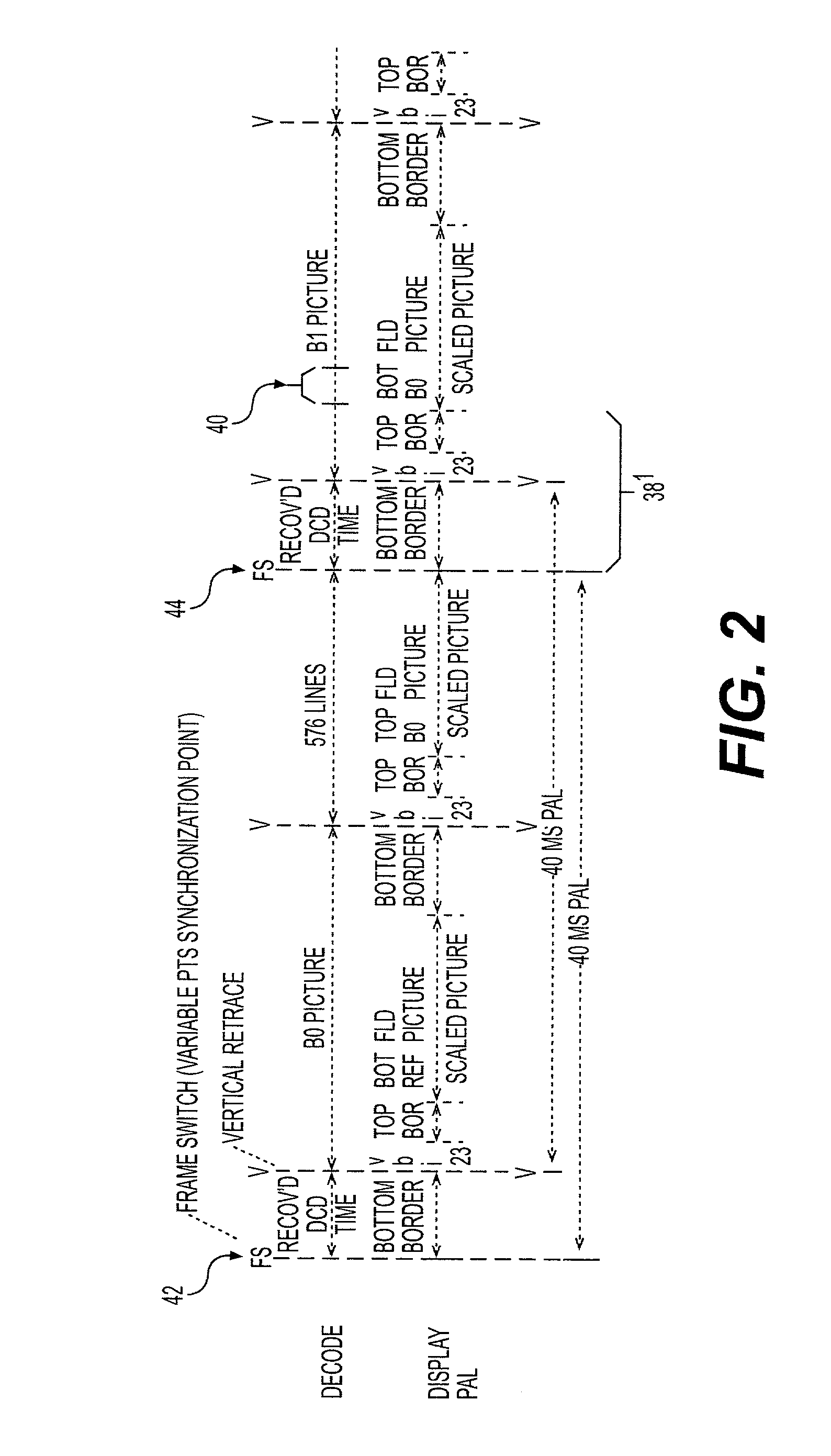Low latency video decoder with high-quality, variable scaling and minimal frame buffer memory
a video decoder and low latency technology, applied in the field of low latency video decoders, can solve the problems of increasing the time gap between the end of the picture display and the pts synchronization point, correspondingly significant amount of decoding time lost, and complicating synchronization
- Summary
- Abstract
- Description
- Claims
- Application Information
AI Technical Summary
Benefits of technology
Problems solved by technology
Method used
Image
Examples
Embodiment Construction
[0033] Referring now to the drawings, and more particularly to FIGS. 1A and 1B, there is shown a depiction of a motion video image arbitrarily scaled and positioned on a display area of a display screen and a timing diagram corresponding to the above-described scenario that will be useful in understanding the problem addressed by the invention, respectively. Referring to FIG. 1A, particularly for definition of terminology used herein, a rectangular display area 10 is provided which corresponds to the raster size of the display but may or may not correspond to the dimensions of the hardware display screen. However, it will often be the case that the screen area and the display area 10 will be congruent and, for simplicity, the terms screen and display area may be used interchangeably. Within this display area 10 a rectangular scaled motion video area 11 having boundaries 12, 14, 16 and 18, defines a top border area 15 and a bottom border area 17.
[0034] It should be understood that th...
PUM
 Login to View More
Login to View More Abstract
Description
Claims
Application Information
 Login to View More
Login to View More - R&D
- Intellectual Property
- Life Sciences
- Materials
- Tech Scout
- Unparalleled Data Quality
- Higher Quality Content
- 60% Fewer Hallucinations
Browse by: Latest US Patents, China's latest patents, Technical Efficacy Thesaurus, Application Domain, Technology Topic, Popular Technical Reports.
© 2025 PatSnap. All rights reserved.Legal|Privacy policy|Modern Slavery Act Transparency Statement|Sitemap|About US| Contact US: help@patsnap.com



